This article was co-authored by Karissa Sanford. Karissa Sanford is the Co-owner of Make Me Holey Body Piercing, a piercing studio based in the San Francisco Bay Area that specializes in safe and friendly body piercing. Karissa has over 10 years of piercing experience and is a member of the Association of Professional Piercers (APP).
There are 8 references cited in this article, which can be found at the bottom of the page.
This article has been viewed 49,150 times.
Taking care of your teeth is good for your overall health, but it also keeps your tongue piercing clean. Use a safe brushing technique to work around your piercing. Rinsing with mouthwash and saltwater also helps clean your teeth and heal your tongue. Proper oral care enables you to feel healthier and preserve your favorite jewelry for longer, so take time to brush your teeth every day.
Steps
Cleaning Your Teeth While Your Tongue is Healing
-
1Leave jewelry in place until the piercing heals. You do not need to remove your jewelry when you brush your teeth. In fact, if you remove it, you run the risk of irritating your tongue or having the piercing close up. Tongue piercings heal much quicker than many other piercings, so don't risk removing jewelry at first. Besides, fresh piercings make your tongue too tender to touch.
- Tongue piercings heal within 6 to 8 weeks on average. After that point, you can remove the piercing whenever you want. Try taking it out when you eat or brush your teeth to help keep it clean.
-
2Use a new toothbrush when you first get your piercing. Toothbrushes collect bacteria over time, so getting a new brush reduces the chances of infection. Look for slim toothbrushes designed to reach small spaces. Slimmer soft-bristled brushes are useful for brushing both your teeth and your piercing.
- Stop at your local drug store or general store to get a new toothbrush. Brushes are inexpensive compared to the cost of discomfort and medical treatment for an infection.
Advertisement -
3Hold the toothbrush at a 45-degree angle to avoid bumping the piercing. Starting at the back of your mouth, position your toothbrush with the bristles facing the roots of your teeth. Take care of the inside portion of each tooth first. Work from the back to the front and repeat with your other row of teeth. Avoid the piercing for now, especially if you just had it put in.
- New piercings make your tongue very sensitive. Try to avoid it as best you can by holding the toothbrush at an angle. The swelling goes away after 7 to 10 days.
-
4Brush your teeth using circular motions for 2 to 3 minutes. Instead of using a back and forth motion, move in small circles. This cleans your teeth effectively without damaging the enamel or hitting your piercing. Continue doing this for a few minutes to ensure you remove all plaque and debris. Brush the inside, outside, and top of each tooth to keep your smile healthy.[1]
- As you brush, roll or sweep the toothbrush down from the tops of your teeth to direct the debris into your mouth.
- Don’t rush! Rushing is tempting, but quick brushing may leave debris that can wear down your teeth or get into your piercing.
-
5Brush your teeth 3 times a day after eating. For great teeth, reach for your toothbrush about half an hour after every meal. This is especially important while your piercing heals, since it clears away plaque and food particles that can lead to an infection. However, stay hygienic by making it a part of your routine even after your mouth goes back to normal.[2]
- Acidic foods wear down your teeth if you brush right away after eating. Some examples of acidic food include grains, sugar, fish, some meat, and sweetened drinks. Drinking water after eating or brushing before you eat are ways to protect your teeth.[3]
- Frequent brushing is a great way to keep your teeth in shape and avoid some tense visits to the dentist. Keep in mind, though, that brushing too hard or too frequently can wear down enamel.
- After brushing, floss the space between your teeth as you normally do. Take extra care while working on the areas close to the hole in your tongue. Knocking your hand against it could be painful.
EXPERT TIPKarissa Sanford is the Co-owner of Make Me Holey Body Piercing, a piercing studio based in the San Francisco Bay Area that specializes in safe and friendly body piercing. Karissa has over 10 years of piercing experience and is a member of the Association of Professional Piercers (APP).Body Piercing Specialist
 Karissa Sanford
Karissa Sanford
Body Piercing SpecialistIt's essential to keep your normal oral hygiene routine. Your mouth and tongue need to be extremely clean after a tongue piercing, so keeping your normal routine helps you stay on track, and your piercing heal faster. Always go slow and avoid bumping into the jewelry.
Using Mouthwashes
-
1Mix salt and warm water to create a healing rinse for fresh piercings. Make sure you use an iodine-free salt to avoid irritating your tongue. Stir about ¼ teaspoon, or 1.25 g (0.044 oz), of sea salt into 236.59 mL (8.000 fl oz) of warm water. Use bottled or distilled water if you have some available.[4]
- You may be able to find prepackaged, sterile saline solutions made for wound care. These are very good when you don’t have time to make your own saltwater.
- You can prepare the saltwater in advance and store it in the refrigerator until you need it.
-
2Rinse your mouth with saltwater twice a day until the piercing heals. The best time to use the saline solution is after you eat in the morning and at night. You could also do it when you get up and before you go to bed, but the solution works best when neutralizing leftover food particles. Swirl the solution gently around in your mouth for 10 to 15 seconds before spitting it out.[5]
- You can use the saline solution 4 or 5 times a day. It’s a great alternative to using harsher mouthwashes after every single meal and helps your tongue heal a little faster.
- Saline solutions are also very good for cleaning piercings you can’t remove or touch without problems.
-
3Use an alcohol-free mouthwash after every meal until the piercing heals. Antimicrobial and antibacterial mouthwashes are great to have around your home, especially while your piercing is healing. Alcohol and other antiseptics irritate fresh piercings, so avoid them as much as possible. If you can find mouthwashes designed to treat oral wounds, take advantage of them to help your piercing heal.[6]
- Look for chlorhexidine mouthwashes at your local drug store or general store.
- Use a mouthwash no more than 4 to 5 times a day. Try rinsing with mouthwash whenever you eat anything other than water.
-
4Reduce mouthwash usage to once a day after the piercing heals. After the piercing heals in 6 to 8 weeks, you no longer need the mouthwash quite as often and may choose to stop using it entirely. If you continue using it, use it sparingly to avoid it from wearing down your teeth. Swirl it around your mouth for 30 to 60 seconds before spitting it out.[7]
- Using a mouthwash is especially important when you notice sores or other issues in your mouth. These spots can get infected by bacteria even after the initial piercing has healed.
Caring for Your Mouth Long-Term
-
1Brush the area around the piercing after the swelling dies down. Keep your piercing in place while you do this. After you finish brushing your teeth, start working on your tongue. Gently push the bristles into the space around the piercing. Scrub the area as much as you can to remove bacteria, then rinse with fresh water when you’re done.
- Wait about a week for the swelling to go down after getting a new piercing. You won’t enjoy trying to do this before then. Give your tongue plenty of rest until then.
- Try to move the piercing as little as possible until your tongue heals. It heals completely after 6 to 8 weeks, but it is most delicate in the first 10 days.
-
2Scrub the ends and post of the piercing to keep it clean. Expect a white plaque to settle over it if you don’t clean it every day. Brush the entire piercing as thoroughly as you can. This includes the piercing’s ends and the part going through your tongue. Be gentle with it, especially while the hole heals.
- If your tongue feels too tender to touch with a brush, try wiping it off with your finger. Use a little toothpaste or some hand soap, then rinse out your mouth with clean water.
-
3Use your toothbrush to scrub removed jewelry. Once you are able to remove your piercing freely, consider taking it out to give it a more thorough cleaning. Wash your hands thoroughly before touching it. Then, dip the piercing in a mixture of about 5 mL (0.17 fl oz) mouthwash and 10 mL (0.34 fl oz) water. Dip your toothbrush in the solution and use it to scrub away any debris.
- Another option is to soak the piercing in diluted mouthwash or a saline solution for 5 to 10 minutes. Rinse it off with clean water when you’re done.
- If you brush and use mouthwash regularly, deep cleaning jewelry this way isn’t often necessary. When your jewelry starts looking a little cloudy, take it out and freshen it up.
- Keep in mind that tongue piercings often heal quickly. Your piercing may start to fill in within 30 minutes if it is new. Everyone heals at a different rate, and it heals more slowly the longer you have it.
-
4See your dentist every six months for a checkup. Maintaining good oral hygiene at all times is important. Even with proper home care, you still need professional cleanings and inspections. Your dentist can help you identify health issues before they turn into bigger problems.[8]
- Ask your dentist for advice on proper brushing and flossing techniques as well as how to keep a piercing clean.
-
5Inspect your mouth for sores and anything else out of the ordinary. Tongue piercings may lead to complications, so be prepared for them. The worst part is usually when you first get the piercing done, although tears and sores can happen at any time. Most problems are easy to handle with proper brushing and cleaning, but call a dentist or doctor during an emergency.[9]
- Your tongue will swell up when you first get a piercing done. It’s awkward and a little painful, but it goes away after about a week.
- Watch for cuts and sores, especially if you tug on your piercing. Bacteria easily gets into these spots, leading to an infection. Use mouthwash until the spots heal.
- Visit a doctor right away if you experience severe swelling or signs of an infection like fever, chills, and red streaks on your tongue.
Community Q&A
-
QuestionDoes it need to be a specific salt brand, or could it just be any type of salt?
 Community AnswerIt must be iodine free sea salt. Iodine slows the healing process of the piercing.
Community AnswerIt must be iodine free sea salt. Iodine slows the healing process of the piercing.
Warnings
- Infections are always a threat with piercings, so maintain proper care of your mouth and visit a medical professional when you experience adverse symptoms.[11]⧼thumbs_response⧽
Things You’ll Need
- Soft-bristled toothbrush
- Toothpaste
- Antibacterial or antimicrobial mouthwash
- Iodine-free sea salt
- Water
- Clean cup
References
- ↑ https://www.mouthhealthy.org/en/az-topics/b/brushing-your-teeth
- ↑ https://www.mouthhealthy.org/en/az-topics/b/brushing-your-teeth
- ↑ https://www.mayoclinic.org/healthy-lifestyle/adult-health/expert-answers/brushing-your-teeth/faq-20058193
- ↑ https://www.cieh.org/media/1975/tattoo-toolkit_part-c_03-oral-piercing-aftercare.pdf
- ↑ https://www.cieh.org/media/1975/tattoo-toolkit_part-c_03-oral-piercing-aftercare.pdf
- ↑ https://uhs.berkeley.edu/sites/default/files/piercingcare.pdf
- ↑ https://www.ncbi.nlm.nih.gov/pmc/articles/PMC4445083/
- ↑ https://my.clevelandclinic.org/health/treatments/11187-dental-check-up
- ↑ https://www.ada.org/resources/research/science-and-research-institute/oral-health-topics/oral-piercing-jewelry
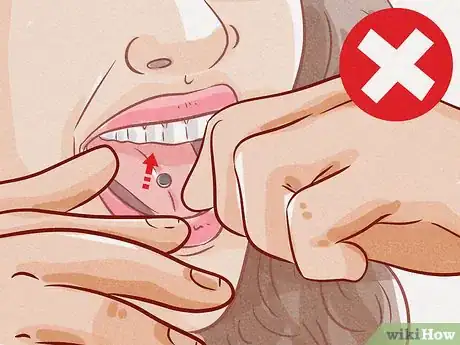
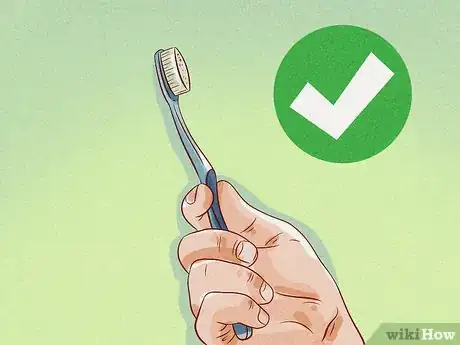
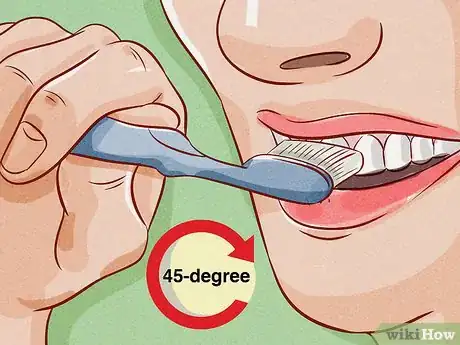
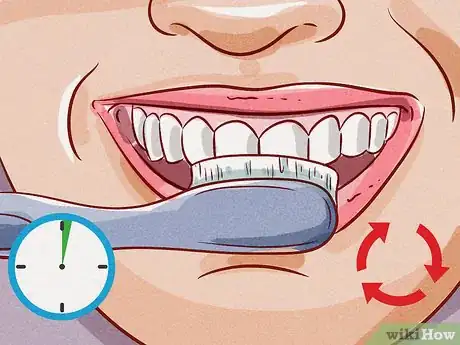
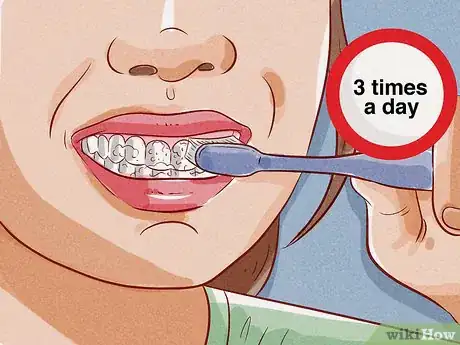
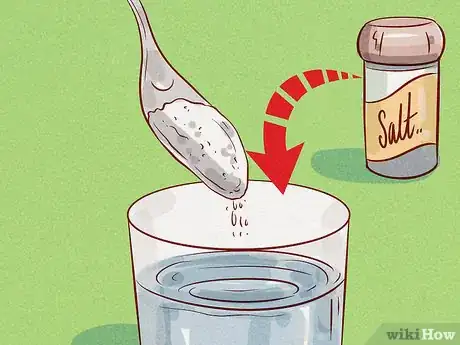
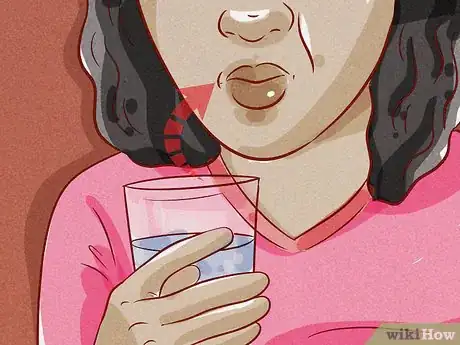
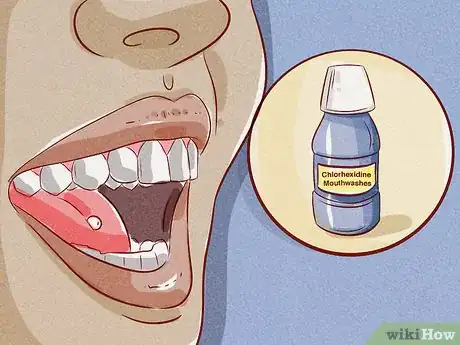
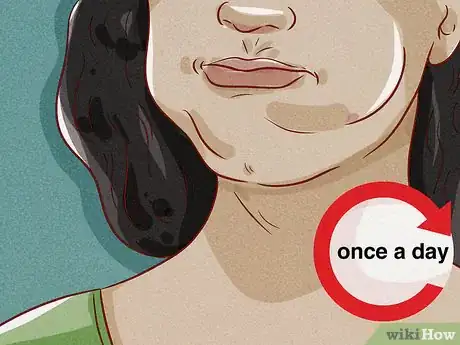
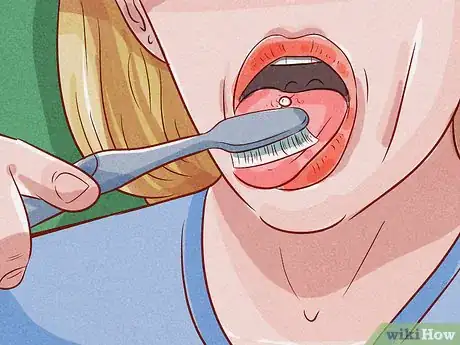

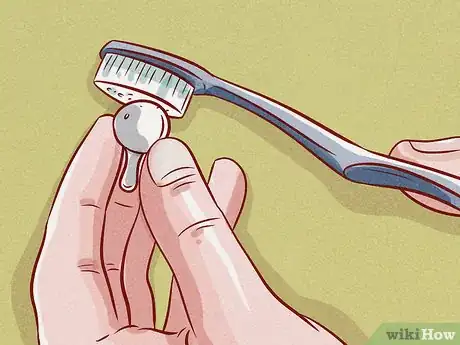
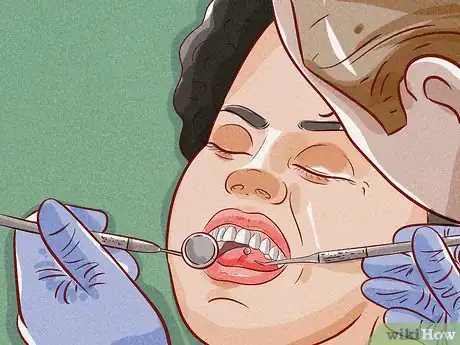



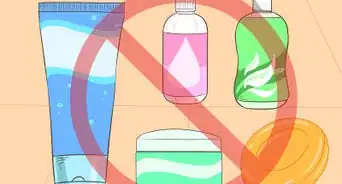
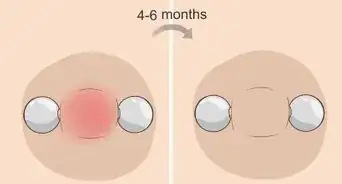

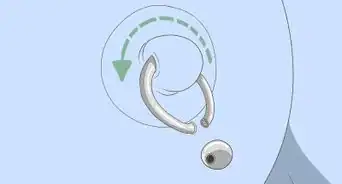
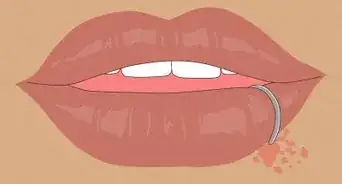


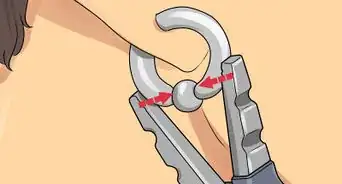








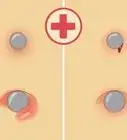
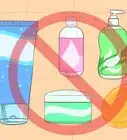
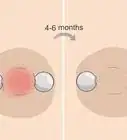



































Medical Disclaimer
The content of this article is not intended to be a substitute for professional medical advice, examination, diagnosis, or treatment. You should always contact your doctor or other qualified healthcare professional before starting, changing, or stopping any kind of health treatment.
Read More...